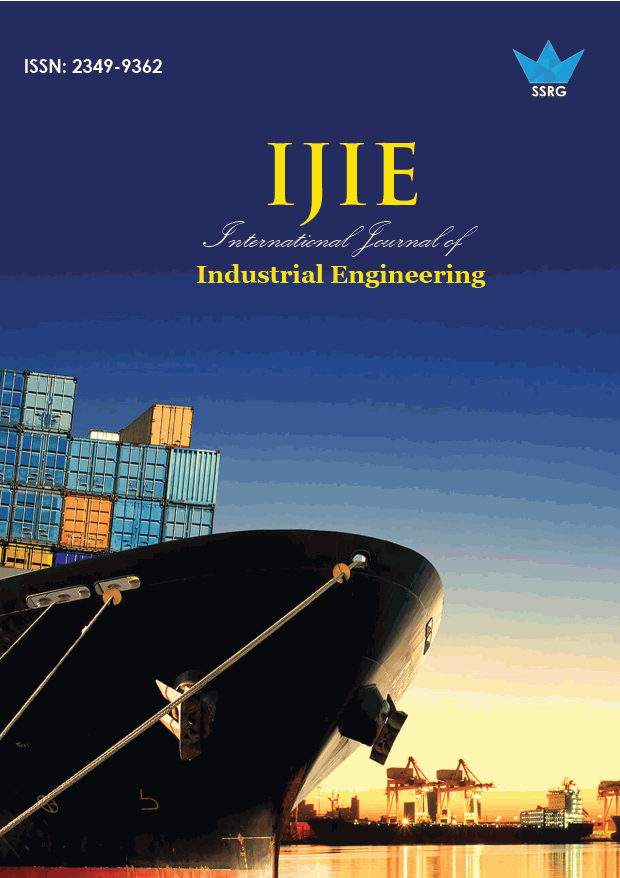Risk Level Assessment of Pipelines using a Combination of Analytical Network Process and Risk Based Inspection Methods

| International Journal of Industrial Engineering |
| © 2018 by SSRG - IJIE Journal |
| Volume 5 Issue 3 |
| Year of Publication : 2018 |
| Authors : Mobin and Hari Purnomo |
How to Cite?
Mobin and Hari Purnomo, "Risk Level Assessment of Pipelines using a Combination of Analytical Network Process and Risk Based Inspection Methods," SSRG International Journal of Industrial Engineering, vol. 5, no. 3, pp. 19-27, 2018. Crossref, https://doi.org/10.14445/23499362/IJIE-V5I3P104
Abstract:
Using pipelines is the most effective and efficient way to transport oil and gas to an intended destination. However, pipelines also pose risks to humans, the environment and business interests. This research study assessed the level of pipeline risk of PT X. As such, it aimed to identify the efficacy of inspection and maintenance planning using a priority scale based on the ranking of the causes of failure. A combination of Analytical Network Process (ANP) and Risk-based Inspection (RBI) methods was used to assess the risk level of pipeline failure. The results using the ANP method showed that corrosion (44.64%) is the main factor causing failure to the pipelines. The atmospheric corrosion subfactor is one of the corrosion factors that contributed to pipeline failure (16.12%). Safety is the most significant consequence of the impact of pipeline failure (51.54%). Furthermore, by applying the RBI method, the Probability of Failure (PoF) value was calculated to be 1.2028 and the Consequence of Failure (CoF) value was 4.290, resulting in a risk level of 4 on the risk matrix order of 6 x 6. Inspection and maintenance programmes should pay special attention to the corrosion factors and the atmospheric corrosion subfactors in order to reduce the risk level associated with pipeline failure.
Keywords:
capacitated production planning problem; stochastic demand; simulation; cyclic coordinate method.
References:
[1] Rahman, M.R. (2015). Perencanaan Modifikasi Pipa penyalur Minyak dengan Adanya Penambahan Platform Produksi. Seminar Nasional Cendekiawan. ISSN: 2460-8696. [Cited: August 27 2018]. Available at: http://media.neliti.com/media.publications.
[2] Shafiq, N. and Silvianita. (2010). Prioritizing the Pipeline Maintenance Approach Using Analytical Hierarchical Process. International Review of Mechanical Engineering, Vol. 4 Issue 3, pp. 346–352.
[3] Dawotola, Alex. W., Van Gelder, P.H.A.J.M. and Vrijling, J.K. (2011). Decision Analysis Framework for Risk Management of Crude Oil Pipelines.Hindawi Publishing Corporation Advances in Decision Science, Article ID 456824.
[4] American Petroleum Institute (2009). Risk Based Inspection API RP 580, 2nd Edition. Washington DC: API Publishing Service.
[5] Selvik, J.T., Scarf P. and Aven T. (2011). An Extended Methodology for Risk Based Inspection Planning. RT&A # 01 (20). Vol. 2. [Cited: October 12 2017]. Available at: https://www. pdfs.semanticscholar.org.
[6] Saaty, T. L. (1999). Fundamentals of the Analytic Network Process, ISAHP. Kobe, Japan, [Cited: October 14 2017]. Available at: http://www.isahp2003.net.
[7] Muhlbauer, W.K. (2004). Pipeline Risk Management Manual. Ideas, Techniques and Resources. Third Edition, Elsevier Inc. Oxford: Gulf Professional Publishing as an Imprint of Elsevier.
[8] HES Risk Management Center of Excellence. (2011). RiskMan2, Integrated Risk Prioritization Matrix User Guide. Chevron.
[9] Saaty, T. L. (2004). Decision Making: The Analytic Hierarchy and Network Process (AHP/ANP).Journal of System Science and System Engineering, Vol. 13, No. 1, pp.1–35.
[10] Saaty. R.W. (2016). Decision Making in Complex Environments: The Analytical Network Process (ANP) for Dependence and Feedback. Including a Tutorial for the SuperDecisions Software and Portions of the Encyclicon of Applications, Vol. I. ISBN Number 1-888603-00-3. [Cited: July 14 2018]. Available at: http://www.superdecisions.com.
[11] Wibowo, M. R. A. (2010). Perancangan Model Pemilihan Mitra Kerja dalam Penyediaan Rig Darat dengan Metode Analytical Network Process (ANP),Tesis, Fakultas Teknik, Universitas Indonesia.
[12] Sugiyono. (2016). Statistika untuk Penelitian. Bandung: Alfabeta.
[13] Amir, M.T. (2015). Merancang Kuesioner. Konsep dan Panduan untuk Penelitian Sikap, Kepribadian & Perilaku. Prenadamedia. Jakarta.
[14] American Petroleum Institute (2013). Managing System Integrity for Hazardous Liquid Pipeline API RP 1160, 2nd edition. Washington DC: API Publishing Service.

 10.14445/23499362/IJIE-V5I3P104
10.14445/23499362/IJIE-V5I3P104